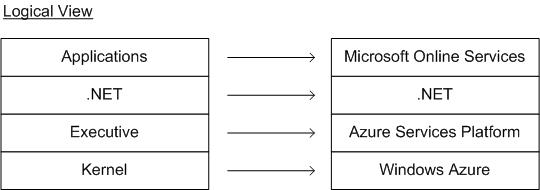Microsoft Azure cloud OS announced at PDC2008
I am here at the PDC in Los Angeles having just watched Ray Ozzie and Bob Muglia finally present the next generation of Microsoft's Cloud Services / Software plus Services strategy with the release of our new operating system for the cloud "Azure"!
Windows Azure was designed from the ground up for the needs of cloud based computing models. It includes capabilities such as:
- Scalable hosting - from a fraction of a server to many servers
- Automated service management - fabric controller manages the health and lifetime of deployed services according to a services model
- High-availability - replicated backend storage
- Rich developer experience
- Open platform - Command line interfaces, REST protocols, WS, Web…
As I watched the presentation it dawned on me some of the parallels between how existing operating systms are designed and the functions that will now be fulfilled by Azure. The diagram below shows a conceptual view of the core layers in existing operating systems, which are typically split between kernel mode and user mode where user applications are designed to be run.

Logically Azure follows a similar model having the Azure OS providing the equivalent of the kernel exept now running in the cloud managing a potentially limitless number of CPU's, memory and disk storage all hosted in the cloud.
Moving up a level we have the Microsoft Azure Services Platform. As with the executive in an OS taking responsibility for security, storage, I/O and IPC; Azure provides a host of similar capabilities. At the lowest level the Azure Services Platform includes support for .Net Services including a Service Bus, Access Control and Workflow Services. It also includes SQL Services. At a higher level the Azure Services Platform includes support for Live Services, Sharepoint Services and Dynamics CRM Services.
In terms of how applications can be designed to run on in this new cloud based paradigm the great news is that it is all through our existing tools and languages - Visual Studio and .NET. At the highest level in the stack where traditionally applications like Office would run, we now have online extensions to these products including: Windows Live, Office Live, Exchange Online, Sharepoint Online and Dynamics CRM Online.
Anyway, this post should introduce you to some key concepts and technologies that I believe are going to be critical to consider as you design distributed applications moving forward. I personally think this announcement and the associated announcements that you will continue to hear over the course of this week is the most significant change in our industry since the release of .NET.
Comments
- Anonymous
November 18, 2008
i just think its funny that we have the same name.